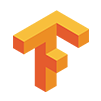
Unlock the power of machine learning with our TensorFlow Online Training Course. Perfect for beginners and intermediate learners, this course covers essential TensorFlow concepts, neural network architecture, model building, and deployment. Engage in hands-on projects and real-world applications to develop your skills. Join now to advance your AI expertise and boost your career with TensorFlow proficiency.
TensorFlow Interview Questions Answers - For Intermediate
1. What is a Tensor in TensorFlow, and how does it differ from a NumPy array?
A Tensor is TensorFlow’s fundamental data structure representing multi-dimensional arrays with a specific type. Unlike NumPy arrays, tensors can be processed on GPUs/TPUs for accelerated computation and support automatic differentiation, which is essential for training machine learning models.
2. Explain the role of Keras in TensorFlow.
Keras serves as TensorFlow’s high-level API, providing user-friendly interfaces for building and training neural networks. It abstracts complex operations, allowing for rapid model development and experimentation while leveraging TensorFlow’s powerful backend for scalability and performance.
3. What is the purpose of the compile method in Keras models?
The compile method configures the model for training by specifying the optimizer, loss function, and evaluation metrics. This setup defines how the model will learn from data, optimize its parameters, and assess performance during the training process.
4. Describe how TensorBoard is used for visualizing model training.
TensorBoard is TensorFlow’s visualization tool that allows users to monitor and analyze metrics such as loss and accuracy, visualize computational graphs, and track model performance over time. It aids in debugging and optimizing models by providing insightful visual representations of the training process.
5. What are TensorFlow datasets (tf.data), and why are they important?
tf.data is TensorFlow’s API for building efficient and scalable input pipelines. It facilitates loading, preprocessing, batching, and shuffling data, ensuring optimized data handling which is crucial for training large models efficiently and effectively.
6. Explain the difference between tf.function and regular Python functions.
tf.function transforms a Python function into a TensorFlow graph, enabling optimized and accelerated execution. Regular Python functions execute operations eagerly, which can be slower. Using tf.function enhances performance by leveraging graph optimizations for training and inference.
7. How do you implement early stopping in TensorFlow Keras?
Early stopping is implemented using a callback that monitors a specific metric, such as validation loss, and halts training when no improvement is observed over a set number of epochs. This technique prevents overfitting and reduces unnecessary training time by stopping the process once optimal performance is reached.
8. What is transfer learning, and how is it applied in TensorFlow?
Transfer learning involves using a pre-trained model on a new, related task. In TensorFlow, this typically means loading an existing model, freezing its layers to retain learned features, and adding new layers tailored to the specific problem, facilitating faster training and improved performance with limited data.
9. Describe how to save and load a TensorFlow Keras model.
TensorFlow Keras models can be saved in a single file or directory format, preserving the architecture, weights, and optimizer state. Loading a saved model restores it for further training or inference, ensuring consistency and enabling easy deployment across different environments.
10. What are custom layers in TensorFlow, and how do you create one?
Custom layers extend TensorFlow’s standard layer classes to implement unique behaviors or operations. By defining a new class that inherits from tf.keras.layers.Layer and implementing necessary methods, developers can tailor layers to specific model requirements, enhancing flexibility and functionality.
11. Explain the use of optimizers in TensorFlow and name three common ones.
Optimizers adjust model weights to minimize the loss function during training. Common optimizers include Stochastic Gradient Descent (SGD), which updates weights based on the gradient; Adam, which combines momentum and adaptive learning rates; and RMSprop, which adapts learning rates based on recent gradient magnitudes, each offering different advantages for convergence.
12. How do you handle overfitting in TensorFlow models?
Overfitting is managed through techniques such as adding dropout layers to randomly deactivate neurons, applying regularization to penalize large weights, using early stopping to halt training when validation performance plateaus, and augmenting data to increase dataset diversity, all of which enhance the model’s ability to generalize.
13. What is a callback in TensorFlow Keras, and provide an example use case.
Callbacks are functions invoked at specific stages of the training process, allowing custom actions like saving the model, adjusting learning rates, or stopping training early. An example use case is ModelCheckpoint, which saves the model’s weights whenever there is an improvement in validation performance.
14. Describe how to perform hyperparameter tuning in TensorFlow.
Hyperparameter tuning involves systematically searching for the optimal set of model parameters, such as learning rate, batch size, and number of layers. Tools like Keras Tuner facilitate this process by defining a search space and employing strategies like random search or Bayesian optimization to identify the best-performing combinations based on validation metrics.
15. What is the purpose of BatchNormalization in TensorFlow, and where is it typically used?
BatchNormalization normalizes the inputs of each layer, stabilizing and accelerating training by reducing internal covariate shift. It is typically applied after dense or convolutional layers and before activation functions, improving model performance and allowing for higher learning rates.
16. Explain how to use tf.data to create a pipeline with data augmentation.
Using tf.data, a pipeline can be created by loading the dataset, applying data augmentation transformations such as rotations or flips through mapping functions, batching the data, and shuffling it. This process enhances data diversity on-the-fly, improving the model’s robustness and generalization capabilities.
17. How do you implement a custom loss function in TensorFlow Keras?
A custom loss function is defined by creating a function that takes true and predicted values as inputs and returns a scalar loss value. This function is then passed to the model’s compile method, allowing the model to optimize based on the tailored loss criteria specific to the problem at hand.
18. What is model quantization in TensorFlow, and why is it useful?
Model quantization involves converting model weights and activations from higher precision (e.g., float32) to lower precision (e.g., int8). This reduces the model size and increases inference speed, making it particularly useful for deploying models on resource-constrained devices like mobile phones without significantly compromising accuracy.
19. Describe distributed training in TensorFlow and its benefits.
Distributed training in TensorFlow utilizes multiple GPUs or machines to parallelize the training process. By distributing computations, it accelerates training times, enables handling larger datasets and more complex models, and improves resource utilization, making it essential for scaling machine learning workloads efficiently.
20. What are TensorFlow Hub modules, and how are they used in model development?
TensorFlow Hub modules are reusable pre-trained models or model components that can be integrated into new models. They provide access to high-quality features and architectures, facilitating transfer learning and reducing the time and resources required to develop and train models from scratch.
TensorFlow Interview Questions Answers - For Advanced
1. Explain TensorFlow’s tf.function and its benefits in model performance.
tf.function converts Python functions into optimized TensorFlow graphs, enabling faster execution and better performance. It allows for graph optimizations, parallelism, and efficient memory usage. By leveraging tf.function, models can run more efficiently, especially during training and inference, and integrate seamlessly with TensorFlow’s ecosystem for deployment.
2. How does TensorFlow handle distributed training across multiple GPUs?
TensorFlow uses tf.distribute.Strategy APIs, such as MirroredStrategy, to distribute training across multiple GPUs. It synchronizes gradients and updates model weights across all GPUs, ensuring consistency. The strategy abstracts the complexity, allowing developers to scale models effortlessly while maintaining performance and efficiency in multi-GPU environments.
3. Describe the role of tf.data API in building efficient input pipelines.
The tf.data API facilitates the creation of scalable and efficient input pipelines for TensorFlow models. It allows for easy data loading, preprocessing, batching, and shuffling. Optimizations like parallel processing and prefetching enhance performance, reduce I/O bottlenecks, and ensure seamless integration with training loops, thereby improving overall model training speed.
4. What are TensorFlow’s custom training loops and when would you use them?
Custom training loops in TensorFlow allow developers to define bespoke training procedures beyond the standard model.fit(). Using tf.GradientTape, they can control each training step, implement custom optimization, handle dynamic behaviors, and integrate complex logic. They are useful for research, advanced models, or scenarios requiring fine-grained training control.
5. Explain the concept of TensorFlow Extended (TFX) and its components.
TensorFlow Extended (TFX) is an end-to-end platform for deploying production ML pipelines. Its components include:
- ExampleGen: Ingests data.
- Transform: Preprocesses data.
- Trainer: Trains models.
- Evaluator: Validates models.
- Pusher: Deploys models. TFX ensures scalability, reliability, and seamless integration for deploying machine learning workflows in production environments.
6. How does TensorFlow handle model versioning and deployment using TensorFlow Serving?
TensorFlow Serving is a flexible, high-performance serving system for deploying ML models. It manages multiple model versions, allowing seamless updates and rollbacks. Models are stored in a specified directory with versioned subdirectories. TensorFlow Serving automatically detects new versions, serves the latest by default, and provides APIs for model querying, ensuring efficient and reliable deployment.
7. Discuss the use of TensorFlow’s tf.keras API for building custom layers and models.
tf.keras offers a high-level API for building and training models, supporting custom layers and architectures. By subclassing tf.keras.layers.Layer or tf.keras.Model, developers can define unique behaviors, incorporate custom operations, and integrate complex functionalities. This flexibility allows for the creation of sophisticated models tailored to specific tasks while leveraging Keras’ simplicity.
8. What are TensorFlow’s mechanisms for model optimization and quantization?
TensorFlow provides several optimization techniques, including:
- Pruning: Reduces model size by removing less important weights.
- Quantization: Converts weights to lower precision (e.g., int8) to enhance speed and reduce memory.
- Clustering: Groups similar weights to compress the model. Tools like TensorFlow Model Optimization Toolkit facilitate these processes, improving model efficiency for deployment on resource-constrained devices.
9. Explain how TensorFlow integrates with TensorBoard for advanced visualization.
TensorBoard is TensorFlow’s visualization tool, offering insights into model training and performance. It provides dashboards for metrics like loss and accuracy, visualizes computational graphs, monitors gradients, and displays embeddings. Advanced features include profiling for performance analysis and custom plugins. Integration is seamless via callbacks and logging APIs, enhancing model development and debugging.
10. Describe the implementation and benefits of using TensorFlow’s tf.data.experimental features.
tf.data.experimental includes advanced functionalities like TFRecord parsing, interleaving, and dataset transformations. These features enable efficient handling of complex data pipelines, support for large-scale datasets, and optimized data loading strategies. Benefits include improved performance, scalability, and flexibility in preprocessing, which are crucial for training sophisticated models on diverse and extensive datasets.
Course Schedule
| Apr, 2025 | Weekdays | Mon-Fri | Enquire Now |
| Weekend | Sat-Sun | Enquire Now | |
| May, 2025 | Weekdays | Mon-Fri | Enquire Now |
| Weekend | Sat-Sun | Enquire Now |
Related Courses
Related Articles
Related Interview
Related FAQ's
- Instructor-led Live Online Interactive Training
- Project Based Customized Learning
- Fast Track Training Program
- Self-paced learning
- In one-on-one training, you have the flexibility to choose the days, timings, and duration according to your preferences.
- We create a personalized training calendar based on your chosen schedule.
- Complete Live Online Interactive Training of the Course
- After Training Recorded Videos
- Session-wise Learning Material and notes for lifetime
- Practical & Assignments exercises
- Global Course Completion Certificate
- 24x7 after Training Support













 Join our Live Instructor-Led online classes delivered by industry experts
Join our Live Instructor-Led online classes delivered by industry experts